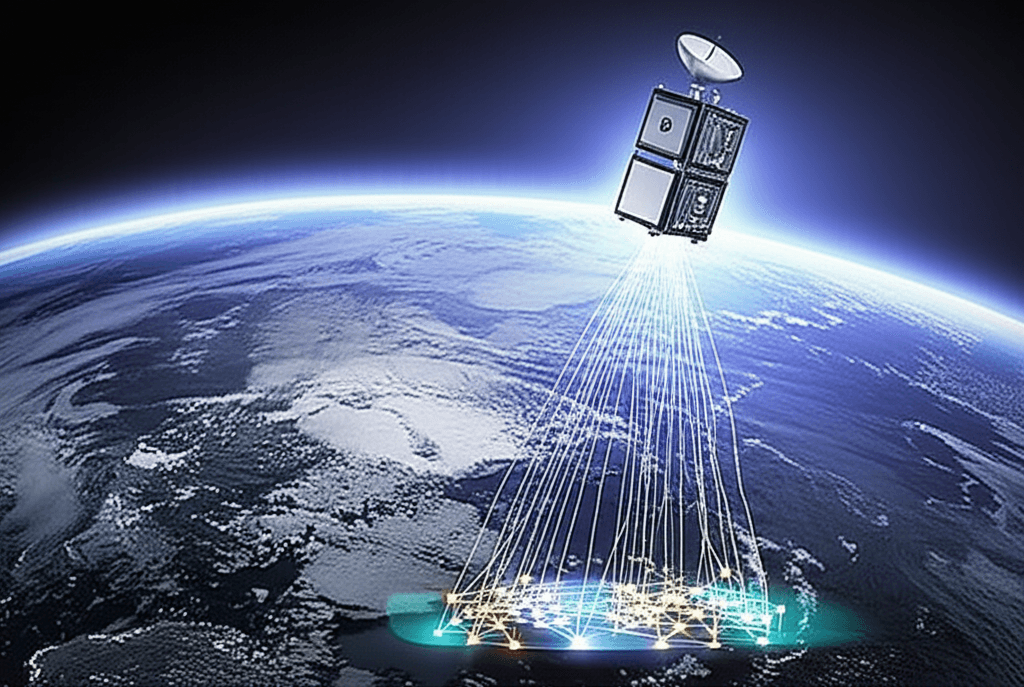NISAR Launches, Fueling AI Revolution in Earth Observation
Powering Earth's new eye, NISAR combines NASA-ISRO collaboration, TI electronics, and AI for unprecedented global insights.
August 21, 2025

A new era of Earth observation has begun, powered by the successful launch of the NASA-ISRO Synthetic Aperture Radar (NISAR) satellite. This sophisticated spacecraft, a joint endeavor between the United States and Indian space agencies, promises to deliver an unprecedented volume of data about our planet's changing surfaces. At the heart of this technological marvel are specialized semiconductors from Texas Instruments (TI), whose radiation-hardened and radiation-tolerant components are essential for the mission's success in the harsh environment of space. The mission not only represents a significant milestone in international space collaboration but also sets the stage for a revolution in how we use artificial intelligence to monitor and understand our world. The vast and continuous stream of high-resolution radar imagery from NISAR will fuel AI-driven analytics, enabling more accurate predictions of natural disasters, better management of natural resources, and a deeper understanding of climate change's impacts.
The critical contribution of Texas Instruments to the NISAR mission lies in its decades of expertise in developing electronics that can withstand the rigors of space.[1][2] Space is a hostile environment for electronics, flooded with radiation from the sun and cosmic rays that can degrade, disrupt, or destroy standard semiconductor components.[3] This radiation can cause cumulative damage, known as the total ionizing dose (TID), which gradually degrades a device's performance, or it can trigger single event effects (SEEs), where a single high-energy particle causes a momentary glitch or a permanent failure.[3][4] To counter these threats, NISAR's vital systems rely on TI's space-grade semiconductors.[1] For the satellite's advanced dual-band synthetic aperture radar (SAR) system to function flawlessly, it requires exceptionally reliable components.[1] TI provided a suite of these essential parts, including high-speed analog-to-digital converters (ADCs), precision clocking solutions for timing, and robust power management systems to distribute and regulate electricity throughout the payload.[1] These components are the result of a decade-long collaboration between TI and the Indian Space Research Organisation’s (ISRO) Space Applications Centre (SAC), working together to overcome complex system-level design challenges.[1]
The NISAR satellite is the first of its kind, utilizing two different radar frequencies (L-band and S-band) to create exceptionally detailed maps of Earth's surface.[5][6] This dual-frequency capability allows it to observe and measure some of the planet's most complex processes with remarkable precision, detecting changes as small as a centimeter.[5] The satellite will map the entire globe every 12 days, providing a consistent and reliable stream of data on a scale never before achieved.[1] Its mission objectives are vast, ranging from monitoring the collapse of ice sheets and measuring sea-level rise to tracking the health of forests and agricultural lands.[7][6] By observing land deformation, NISAR will also provide critical data for understanding and potentially forecasting natural hazards like earthquakes, tsunamis, and volcanic eruptions.[1] The all-weather, day-and-night imaging capability of its SAR system ensures that these crucial observations can be made continuously, unhindered by clouds or darkness.[1] All data collected by the mission will be made freely available to the public, democratizing access to this powerful new view of our planet.[6]
The true potential of the NISAR mission will be unlocked through the application of artificial intelligence and machine learning.[8] The sheer volume of data the satellite will generate—estimated to be petabytes over its mission lifetime—is far too large for manual analysis.[9] AI algorithms will be essential to process this data, identify patterns, and extract actionable insights.[9] For example, machine learning models are already being developed to analyze simulated NISAR data for applications like soil moisture retrieval, a key factor in agriculture and water resource management.[7] In the field of infrastructure, AI will use NISAR's precise measurements to monitor the subtle sinking of land in urban areas or the structural integrity of dams and bridges, offering predictive risk models for developers and city planners.[8] For climate scientists, AI will accelerate the analysis of changes in glaciers, forests, and wetlands, providing a clearer picture of the pace and effects of global warming.[6] This fusion of advanced space-based hardware and sophisticated ground-based AI represents a new frontier in geospatial analytics, turning raw satellite observations into vital intelligence for a sustainable future.
In conclusion, the deployment of the NISAR satellite marks a pivotal achievement in Earth science, enabled by a robust international partnership and cutting-edge semiconductor technology. The radiation-hardened electronics from Texas Instruments provide the foundational reliability needed for the spacecraft to perform its ambitious, long-term mission of systematically monitoring our planet.[1][7] This mission is set to generate a torrent of invaluable data that will enhance our ability to manage resources, respond to disasters, and understand the intricate workings of the Earth system.[1] More profoundly, NISAR will serve as a powerful new instrument for the artificial intelligence industry, providing the high-quality, continuous data needed to train a new generation of algorithms capable of watching over our world and helping us navigate the challenges of a changing climate. The insights gleaned from this collaboration between space and semiconductor technology will undoubtedly echo for years to come, shaping policy, industry, and our fundamental understanding of our home planet.
Sources
[1]
[3]
[4]
[5]
[7]
[8]